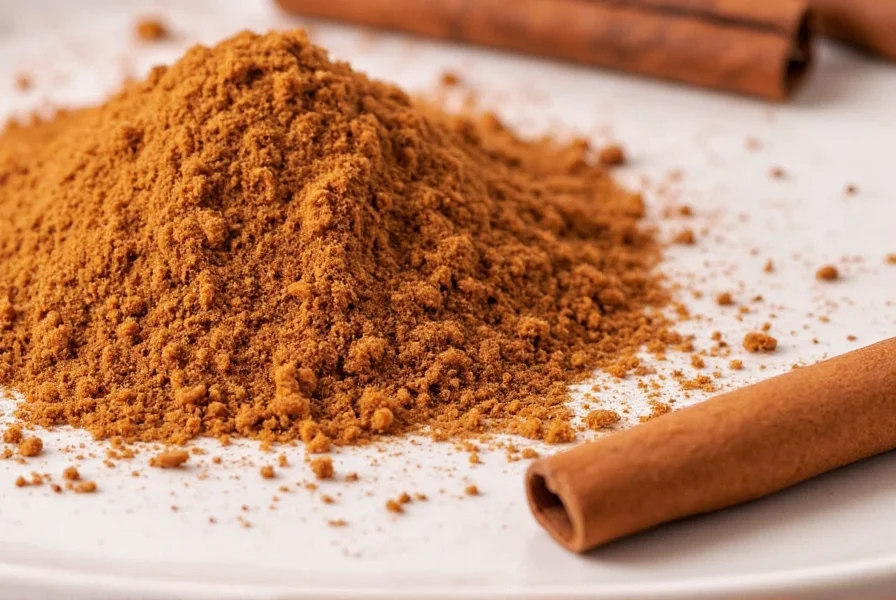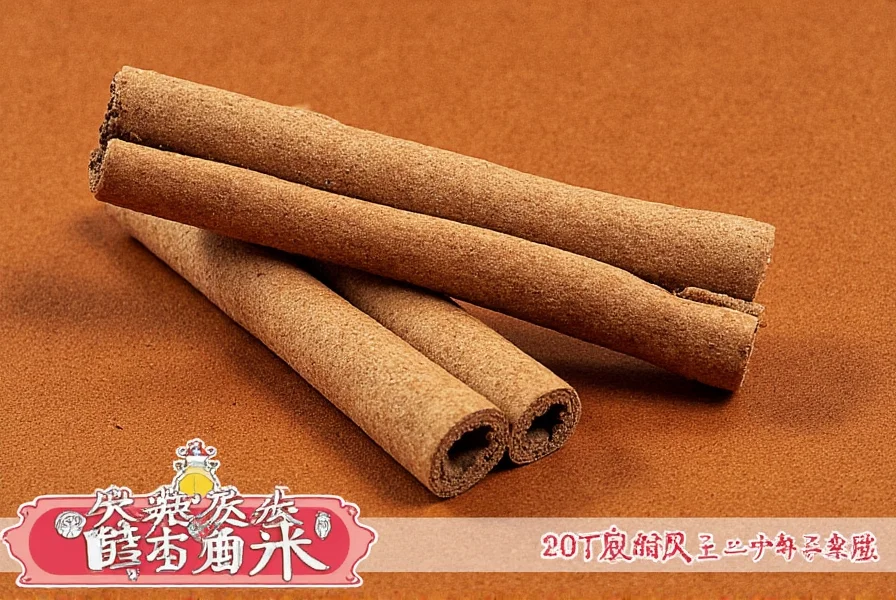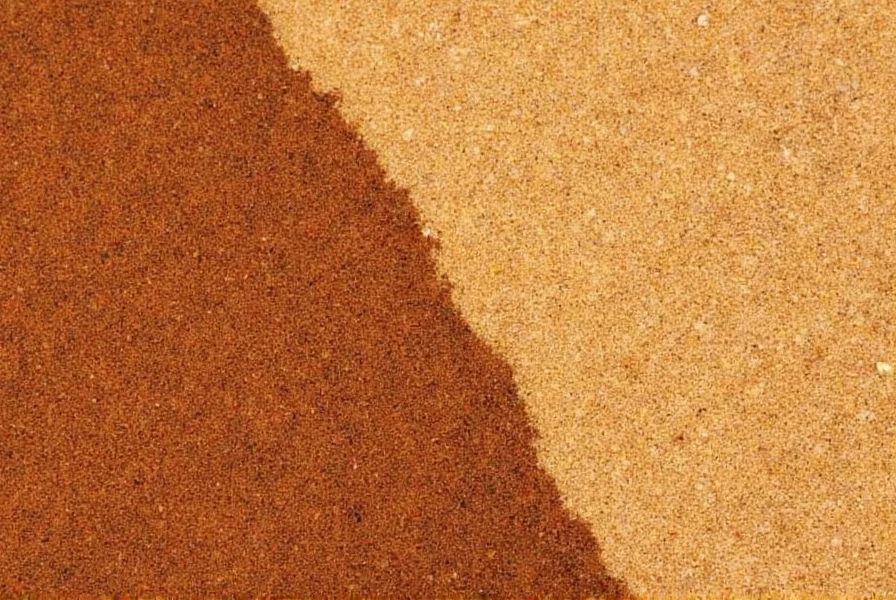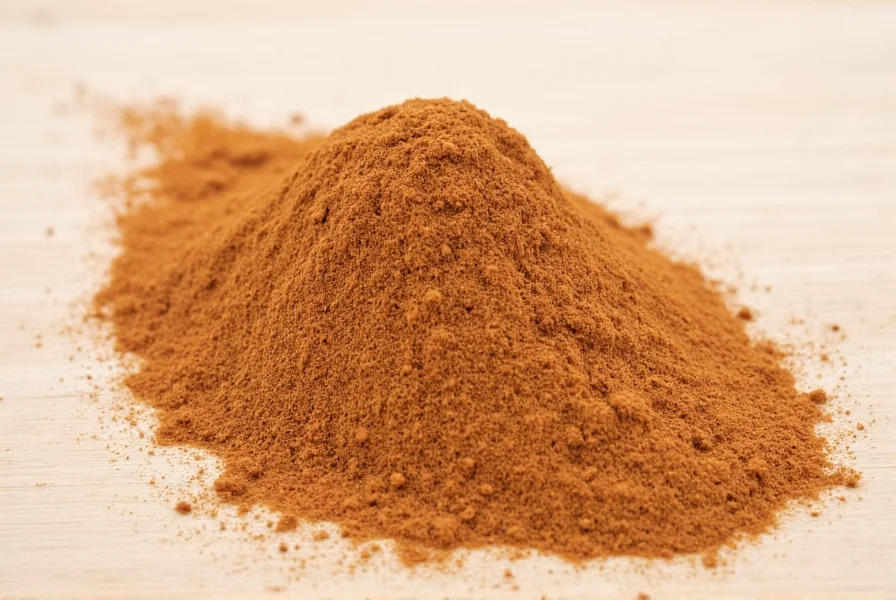The primary difference between Ceylon and Cassia cinnamon is coumarin content: Ceylon has negligible levels (safe for daily consumption), while Cassia has high levels that can cause liver damage with regular use. In this expert guide, we break down the key differences in health impacts, flavor profiles, and culinary uses to help you choose the right cinnamon for your needs.
Table of Contents
- Types of Cinnamon: Ceylon vs Cassia
- Head-to-Head Comparison
- Health Impacts: Why Coumarin Matters
- How to Use Each Type in Cooking
- Buying Guide: Choosing the Right Cinnamon
- Frequently Asked Questions
- Final Thoughts
Types of Cinnamon: Ceylon vs Cassia
Ceylon cinnamon ("true cinnamon") comes from Sri Lanka and southern India, with thin, delicate layers forming a soft quill. Cassia (commonly labeled simply as "cinnamon") originates from China and Indonesia, featuring thick, hard single-layer rolls. The most critical difference is coumarin content, which affects health safety.

Head-to-Head Comparison
| Feature | Ceylon Cinnamon | Cassia |
|---|---|---|
| Origin | Sri Lanka, Southern India | China, Indonesia, Vietnam |
| Texture | Thin, fragile, multi-layered | Thick, hard, single layer |
| Taste | Mild, sweet, complex | Strong, spicy, slightly bitter |
| Color | Pale brown | Dark reddish-brown |
| Coumarin Content | Very low (less than 0.017 mg/g) | High (up to 6.97 mg/g) |
| Price | Expensive | Affordable |

Health Impacts: Why Coumarin Matters
According to the European Food Safety Authority (EFSA), excessive coumarin intake can cause liver damage. For daily consumers, this difference is critical:
Key Safety Difference
- Cassia: High coumarin levels (up to 6.97 mg/g). EFSA recommends maximum daily intake of 0.1 mg per kg body weight. For a 150lb person, this equals approximately 1 teaspoon per day.
- Ceylon: Negligible coumarin (less than 0.017 mg/g), making it safe for regular, long-term consumption without health risks.
Shared Health Benefits
- Both types offer anti-inflammatory properties
- May improve blood sugar control
- Rich in antioxidants like cinnamaldehyde
How to Use Each Type in Cooking
Choose based on flavor intensity and health considerations:
Best For Desserts: Ceylon
- Ideal for custards, puddings, rice pudding, and baked apples
- Use in place of ground cinnamon in cakes and cookies for a refined taste
Best For Baking & Hot Drinks: Cassia
- Perfect for pumpkin spice blends, gingerbread, and mulled wine
- Adds depth to hot chocolate, chai tea, and apple cider
Best For Savory Dishes: Both (with caveats)
- Ceylon adds subtle warmth to Moroccan tagines or Indian biryanis
- Cassia pairs well with strong flavors in slow-cooked stews or barbecue rubs
Buying Guide: Choosing the Right Cinnamon
Make informed choices based on usage and health needs:
Know What You're Buying
- Check labels: Look for "Ceylon cinnamon" — not just "cinnamon"
- Be wary of vague packaging that doesn't specify origin
Consider Your Usage Frequency
- Daily users: Opt for Ceylon for safety and mild flavor
- Occasional bakers: Cassia is affordable and works great in big-flavor recipes
Look at the Form You Need
- Sticks: Ideal for infusing flavor into liquids, soups, and teas
- Ground: Better for mixing into doughs, batters, and spice blends
Top Brands Worth Trying
- Nu Spice Ceylon Sticks: Premium quality, hand-rolled from Sri Lanka
- Frontier Co-op Organic Cassia Powder: Budget-friendly, organic-certified option
- Simply Organic Ceylon Ground: Great for everyday use without breaking the bank

Frequently Asked Questions
What's the main difference between Ceylon and Cassia cinnamon?
The main difference lies in coumarin content and physical structure. Ceylon cinnamon has multiple thin layers with negligible coumarin (less than 0.017 mg/g), making it safe for daily use. Cassia has a single thick layer with high coumarin (up to 6.97 mg/g), posing liver risks with regular consumption.
Which cinnamon is healthier for daily consumption?
Ceylon cinnamon is healthier for daily consumption due to negligible coumarin levels. Cassia contains high coumarin, which the European Food Safety Authority (EFSA) links to liver damage when consumed regularly above recommended limits.
How much Cassia cinnamon is safe to consume daily?
The EFSA recommends a maximum daily coumarin intake of 0.1 mg per kg body weight. For a 150-pound person, this equals approximately 1 teaspoon of Cassia per day. For regular daily use, Ceylon is safer as it contains negligible coumarin.
Can I substitute Ceylon for Cassia in recipes?
Yes, but with adjustments. Ceylon has a milder flavor, so use 1.5-2 times more to match Cassia's intensity. For delicate desserts, use a 1:1 substitution. For bold-flavored items like pumpkin spice, Cassia is preferable or blend both types.
How can I tell if I'm buying Ceylon or Cassia cinnamon?
Visually, Ceylon sticks are thinner, lighter (tan to light brown), and form multiple delicate layers. Cassia sticks are thicker, darker (reddish-brown), and single-layered. Labels should specify "Ceylon cinnamon" — if it just says "cinnamon," it's likely Cassia. Ceylon is typically more expensive and often lists Sri Lanka as the origin.
Is Ceylon cinnamon worth the higher price?
For regular daily use (e.g., in coffee or oatmeal), Ceylon is worth the investment due to its safety profile. For occasional baking of strongly flavored items like gingerbread, Cassia provides good value. Many chefs keep both types for different culinary needs.
Does Ceylon cinnamon have the same health benefits as Cassia?
Both types contain beneficial compounds like cinnamaldehyde and antioxidants that provide anti-inflammatory effects and may help regulate blood sugar. However, Ceylon offers these benefits without the coumarin-related health risks associated with regular Cassia consumption.
Final Thoughts
In the Ceylon cinnamon vs Cassia debate, health safety is the deciding factor for daily use. Ceylon's negligible coumarin makes it the clear choice for regular consumption, while Cassia's bold flavor suits occasional baking. Always check labels for "Ceylon" to avoid hidden Cassia in generic "cinnamon" products.

Whichever cinnamon you choose, remember that spices are meant to enhance your cooking — not complicate it. Now go sprinkle some magic into your next dish!











 浙公网安备
33010002000092号
浙公网安备
33010002000092号 浙B2-20120091-4
浙B2-20120091-4